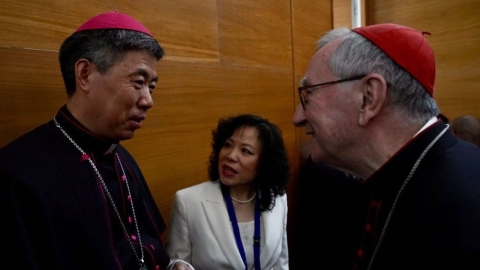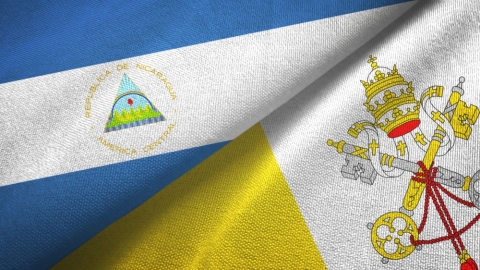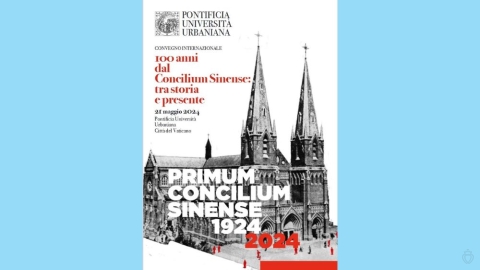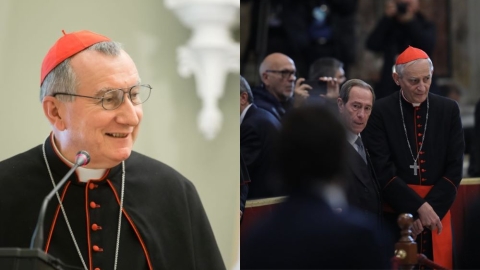Do the 1988 Consecrations Represent a Schismatic Act?

Does the benevolence shown by the Holy Father to the Fraternity of St. Peter, via the type of indult granted in relation to Traditionis Custodes, give reason to those who wanted to “keep the traditional Mass within the visible perimeter of the Church”? And does the fact that the Society of Saint Pius X continues to celebrate this Mass outside this “visible perimeter” constitute a schism?
1. The Claves.org site is the official organ of the Society of St. Peter, the equivalent of what La Porte Latine is for the District of France of the Society of Saint Pius X. In the “theology” section, Fr. Louis-Marie de Blignières, of the St. Vincent Ferrier Fraternity, has recently published a series of “Free interviews on the summer of 1988.” The third interview, published on the April 28, 2022 page, is entitled “Why We Did Not Follow the Consecrations.”
2. The whole explanation of Father rests on a single presupposition: to follow the consecrations, that is to say to approve the act accomplished by Archbishop Lefebvre on June 30, 1988, would be equivalent to not keeping hierarchical communion with the Holy See of Rome. From there, everything holds together.
If the episcopal consecrations of the summer of 1988 represent an act of a schismatic nature, it is clear that the priests and the faithful of the so-called “Ecclesia Dei” movement are right.
The other aspects of the approach which led them to seek to obtain from Rome a regime of favor for Tradition, their personal intentions, their worries, and their pains, are obviously secondary and accidental in relation to this main presupposition.
And, of course also, it is not on these secondary aspects, but rather on this main presupposition that the critical evaluation of the Society of Saint Pius X bears, and the precise reason for its profound divergence from the “Ecclesia Dei” movement. Anything else would just be a misunderstanding.
3. Fr. de Blignières does not dwell on demonstrating his presupposition. “What we wanted,” he writes, “was clear and difficult: to keep the traditional Mass within the visible perimeter of the Church, to use an expression of Jean Madiran, that is to say in hierarchical communion.”
Everything then happened – at least in the mind of Father – as if, by themselves, the episcopal consecrations of June 30, 1988 had undermined this communion and excluded Archbishop Lefebvre and his faithful from the visible perimeter of the Church.
However, in paragraph 1 of the motu proprio Ecclesia Dei afflicta, by which Pope John Paul II officially assesses the scope of these consecrations, and these consecrations are presented by the Holy See as a reason for sadness for the Church, because they consecrate the failure of all the efforts made so far by the Pope “to ensure the full communion with the Church of the Priestly Fraternity of Saint Pius X.”
It is therefore clear that, in the eyes of John Paul II, it was not the consecrations of June 30, 1988 that undermined the communion of the Society with the Church. The problem of “full communion” had arisen before – “until now” – and it was not the consecrations accomplished by Archbishop Lefebvre that gave rise to this already long-standing difficulty.
The following paragraphs, 3 and 4, moreover make the distinction between the scope of the consecratory act, taken in itself (in no. 3) and the much deeper reasons which are at the root of the dispute opposing the Society to the Holy See (at no. 4). Because, says number 4, “at the root of this schismatic act can be discerned in an incomplete and contradictory notion of Tradition.”
In this summer of the year of grace 1988, it was therefore two opposing conceptions of Tradition – and therefore of the common good of the Church – which confronted each other.
4. Everything then depends not on the consecrations but on Vatican II, that is to say on ecumenism, collegiality, and religious freedom. Archbishop Lefebvre explained this sufficiently on many occasions and especially in his homily of June 30, 1988, where he already responded to the reproach that would be leveled at him two days later.
“It seems to me, my dear brethren, that I am hearing the voices of all these popes—since Gregory XVI, Pius IX, Leo XIII, St. Pius X, Benedict XV, Pius XI, Pius XII—telling us: since the Council, what we condemned in the past the present Roman authorities have embraced and are professing. How is it possible?”
“We have condemned them: Liberalism, Communism, Socialism, Modernism, Sillonism. All the errors which we have condemned are now professed, adopted, and supported by the authorities of the Church. Is it possible?”
The “contradictory notion of Tradition” is therefore attributable to present-day Rome, to this so-called “conciliar” Rome by the very fact that it claims to belong to the Second Vatican Council, whose teachings are contrary to the Tradition of the Church.
And if this “contradictory” notion of Tradition is the deep root of the schism, this is for the moment in Rome, in this current Rome which breaks with the Rome of all time. The schism could not be in Ecône, which stands out from this current Rome to remain faithful to the Rome of all time.
John Paul II may well have said that “It is impossible to remain faithful to the Tradition while breaking the ecclesial bond with him to whom, in the person of the Apostle Peter, Christ himself entrusted the ministry of unity in his Church.” This reproach was launched at the figure of Archbishop Lefebvre by the very one who was the first to break the famous ecclesial bond, by freeing himself from the teachings of his predecessors.
Indeed, how can John Paul II claim to remain in communion with Popes Leo XIII, St. Pius X, Pius XI, and Pius XII by performing the scandalous Assisi ceremony twice (1986 and 2002)? The very principle of this ecumenical and interreligious approach is explicitly condemned by the encyclical Mortalium Animos of January 6, 1928, barely 60 years before the consecrations in Ecône.
5. It is then easy to clear up the other aspect of the reproach apparently incurred by Archbishop Lefebvre. His notion of Tradition would be “incomplete” because it would not sufficiently take into account “the living character of Tradition.” In reality, this living Tradition does not exist. It is a contradiction in terms and it is one of the inventions of the Second Vatican Council, breaking with all the previous Magisterium of the Church. The motu proprio believes it can justify this distorted idea of a living Tradition by relying on the famous paragraph 8 of the constitution Dei Verbum, which establishes confusion between Tradition, which is the transmission of the truths revealed by God, accomplished by the Magisterium, and the perception of these same truths by the faithful who receive them from the preaching of the Magisterium.
Another is transmission and the perception of what is transmitted. Perception takes place, and gets better and better; it progresses, effectively and above all thanks to the preaching of the Pope and the bishops.
But the transmission is not progressing in the sense that the Church does not yet definitively possess the fullness of the truth. With this evolutionary conception of living Tradition, the Council opened the door to “the hermeneutics of reform,” of which Benedict XVI made himself the theoretician in his December 22, 2005 speech. [1]
6. Such is the profound reason for which the Holy See condemned Archbishop Lefebvre and his work, and for which Fr. de Blignières and his disciples have refused to follow the consecrations: the definition of Tradition and the Magisterium.
Paragraph 5 of the founding motu proprio of the Pontifical Commission Ecclesia Dei declares that “the extent and depth of the teaching of the Second Vatican Council call for a renewed commitment to deeper study in order to reveal clearly the Council’s continuity with Tradition, especially in points of doctrine which, perhaps because they are new, have not yet been well understood by some sections of the Church.”
It is therefore the idea of living Tradition, applied to Vatican II, in all its consequences, which prevents “following the consecrations” and which demands the adherence of the faithful and the priests for whose benefit the Pope wishes to establish this then-new (though now defunct) Commission.
7. This conciliar and modernist idea of living Tradition is the root cause of the division that still rages among Catholics of Tradition. And finally, the real reason for which Fr. de Blignières and his friends did not want to follow the consecrations is that they did not see all the harmfulness of this new concept, and preferred “to keep the traditional Mass” within the visible perimeter of a very misunderstood obedience.
Fr. Jean-Michel Gleize
Fr. Jean-Michel Gleize is a professor of apologetics, ecclesiology, and dogma at the Saint Pius X Seminary in Ecône. He is the main contributor to Courrier de Rome. He participated in the doctrinal discussions between Rome and the SSPX between 2009 and 2011.
[1] See the article “Magisterium or Living Tradition” in the February 2012 issue of Courrier de Rome.
(Source : La Porte Latine - FSSPX.Actualités)





